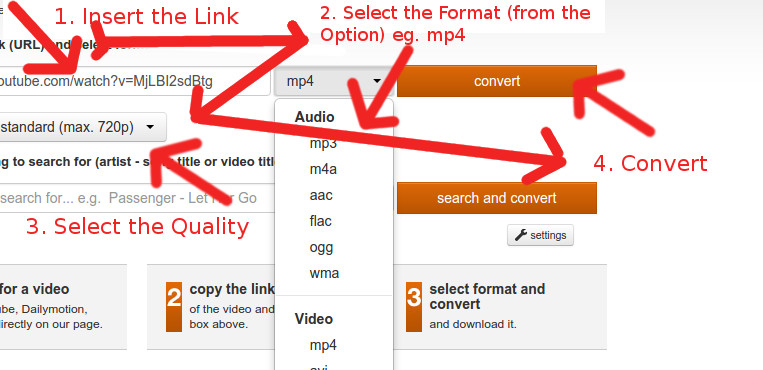


If you want to host the video on your own website or server, you may need to convert the MP4 file to a web-optimized format, such as HTML5, FLV, or SWF. Step 4: Copy the link provided by the cloud storage service and paste it wherever you want to share the video.Īlso read: How to share YouTube videos using deep links? Method 3: Convert MP4 to a Web-Optimized Format Step 3: Once the video is uploaded, click the “copy link” button. Step 2: Upload your MP4 video file to the Dropbox cloud storage service.Īlso read: How to share Videos using Deep Links? Step 1: Create an account or sign in to Dropbox. Step 5: Click the publish button to make the video live on YouTube.Īlso read: YouTube URL Shortener-A Must Have For Every YouTuber Method 2: Use a Cloud Storage ServiceĪnother way to convert an MP4 file to a URL link is by using a cloud storage service, such as Dropbox, Google Drive, or OneDrive.įor example, here’s how you can do it on Dropbox: Step 4: Once uploaded to YouTube, locate the video link directly beneath the video player, just copy the video URL.

Step 3: Complete all necessary video elements, such as the title and video thumbnail, before sharing. Step 2: Click on “upload video” and upload the video you want to convert.

Step 1: Log in to YouTube and select “your channel” from the drop-down menu under the profile icon.Īlso read: How to share YouTube videos using deep links? One of the easiest ways to convert an MP4 file to a URL link is by uploading it to a video hosting platform, such as YouTube, Vimeo, or Dailymotion.įor example, here’s how you can do it on YouTube: So, whether you’re a novice or an expert in video technology, read on to discover how to convert MP4 to a URL link!Īlso read: How to Block a URL in Chrome? Method 1: Upload to a Video Hosting Platform In this guide, we will discuss the most common methods for converting MP4 to a link, step by step. There are several methods you can use to convert an MP4 video file to a link, depending on your needs and preferences. By converting your video to a link, you can easily share it in different formats and with people who may not have access to the original file. In such cases, converting your video to a URL link can be a lifesaver. Or, perhaps you want to share a video on a website or social media platform, but the platform doesn’t support the file format of your video. Have you ever tried to send a large video file to someone, only to realize that the size limit for email attachments or messaging apps has been exceeded?


 0 kommentar(er)
0 kommentar(er)
